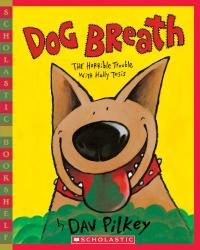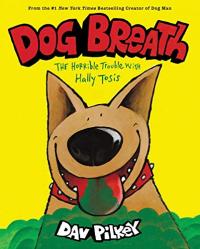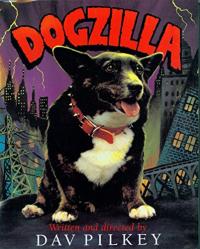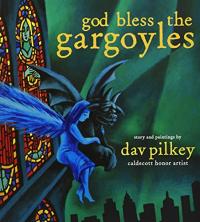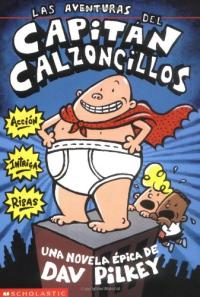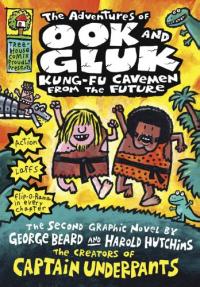
Biography
Dav Pilkey was born in Cleveland, Ohio in 1966. He always loved drawing and creating comic books. In elementary school, Pilkey was diagnosed with ADHD and dyslexia, and was often called out for his behavior in class and sent out to the hallway. Sitting alone at his desk in the hallway, Pilkey invented the Captain Underpants character and began making comics about his unlikely hero, who valiantly defends “truth, justice and all that is pre-shrunk and cottony.”
Learn more about Dav’s early years (comic-style) on his website.
After high school, Pilkey studied at Kent State University where he majored in English, intending to become a teacher. An English professor who noticed Pilkey’s notebook filled with lively cartoons and drawings asked if he’d ever considered writing and illustrating children’s books. Right then and there Pilkey decided to make children’s books his career.
In 1987, Pilkey entered his first book, World War Won, in a national competition for student authors and won in his age category. Along with the recognition, his book was published. That early success was followed by a lot of rejection, but Pilkey persevered and after many years several of his picture books were published, including Dogzilla, Dog Breath, and The Hallo-wiener. In 1996, his picture book, The Paperboy, earned him a Caldecott Honor. The quiet story reflects Pilkey’s own memories of the joy and independence he felt as a young paperboy in his neighborhood.
The first Captain Underpants book was released in 1997 and many more have followed. The series has sold more than 80 million copies and been translated into more than 25 languages. In 2017, DreamWorks released the first Captain Underpants animated feature film.
Pilkey has several thoughts about why the series is so popular. There are the silly humor and outrageous plots, of course. But Pilkey also believes that kids respond to the friendship and loyalty of George and Harold — and their “creative superpowers.” Popular spinoffs of the series include Dog Man, Super Diaper Baby, and The Adventures of Ook and Gluk.
In addition to writing and drawing, Pilkey does lots of school visits where he talks about writing and gets candid, sometimes funny feedback from his young readers. He often hears that his books help kids with learning and attention issues to have their first success as readers. That joy and confidence can encourage a struggling reader to become a lifelong reader.
Pilkey and his wife Sayuri divide their time on Bainbridge Island, Washington and in Minami Izu, Japan.
On banning books
The Captain Underpants books often appear on banned books lists. Pilkey believes you can express concern about a book without undermining the freedom to read of those around you.
Although my books have been deemed “anti-authoritarian” and “inappropriate” by some, I’ve heard from parents, teachers, and kids alike that they’ve helped turn non-readers into readers. I’ve even had kids tell me they’ve “graduated” from reading my books to longer and more complex stories, whether it’s Harry Potter or the Hunger Games. For me, I’d rather focus on that than on the handful of challengers.
I understand that people are entitled to their own opinions about books, but it should be just that: a difference of opinion. All that’s required is a simple change. Instead of saying “I don’t think children should read this book,” just add a single word: “I don’t think my children should read this book.” I made a video to demonstrate how this simple change can allow people to disagree without limiting the choices of others.
Find this author’s books on these booklists
Themed Booklist
Dog Days
Themed Booklist
Holiday Buying Guide 2019
Themed Booklist
Learning to Make Responsible Decisions
Themed Booklist
That’s So Gross!
Themed Booklist

